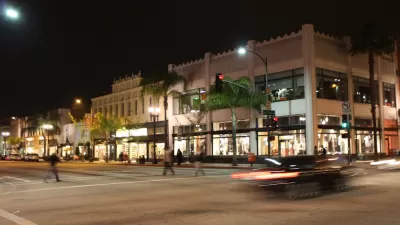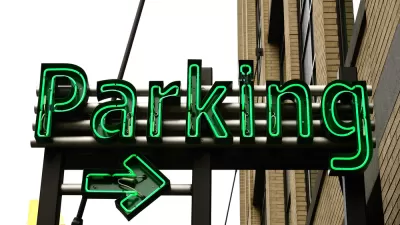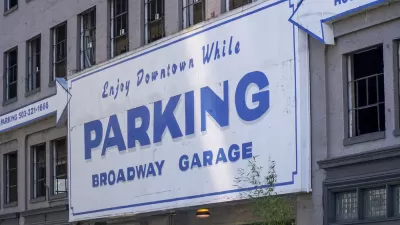The revival of Old Pasadena is one of the truly great urban success stories from the past few decades. The area's comeback was not based on shifting demographics or "political will", writes Colin Marshall, but a less sexy foundation: parking reform.

With its painstakingly preserved historic buildings, crowded streets, and thriving shops and restaurants, Old Pasadena is a model for the type of human-scaled environment that many cities are striving to restore or create. However, the area went through a significant period of decline before reclaiming its former glory.
"A walk through the neighborhood today gives no sense of its sketchy recent past, and people offer a cornucopia of suggestions as to what, exactly, to credit with its thorough revival," notes Marshall. "Shifts in supply and demand, demographic trends, 'political will,' and so on: you can pick the one that best suits your prejudices. For my part, I've heard no more intriguing explanation than the one laid out by UCLA urban planning professor and parking theorist Donald Shoup."
Shoup credits the installation of parking meters, and the decision to dedicate meter revenue to improving the public infrastructure and services in the area, for encouraging building owners to invest in their properties:
They knew the money coming in would come right out the other side and fix their sidewalks, put in new street furniture, put in historic streetlights, put in new street trees, clean up the alleys — just about everything a city can to do fix up the public part of a neighborhood. Once the city had done that, the property owners began to restore their buildings, which didn't make sense beforehand. A lot of new restaurants and stores opened. And Pasadena had $700,000 a year, still, in parking revenue to steam-clean the sidewalks twice a month, to have added police protection, to remove graffiti every night. Now 30,000 or 40,000 people go to Pasadena to walk around every weekend.
FULL STORY: A Los Angeles Primer: Old Pasadena

Maui's Vacation Rental Debate Turns Ugly
Verbal attacks, misinformation campaigns and fistfights plague a high-stakes debate to convert thousands of vacation rentals into long-term housing.

Planetizen Federal Action Tracker
A weekly monitor of how Trump’s orders and actions are impacting planners and planning in America.

In Urban Planning, AI Prompting Could be the New Design Thinking
Creativity has long been key to great urban design. What if we see AI as our new creative partner?

Portland Raises Parking Fees to Pay for Street Maintenance
The city is struggling to bridge a massive budget gap at the Bureau of Transportation, which largely depleted its reserves during the Civd-19 pandemic.

Spokane Mayor Introduces Housing Reforms Package
Mayor Lisa Brown’s proposals include deferring or waiving some development fees to encourage more affordable housing development.

Houston Mayor Kills Another Bike Lane
The mayor rejected a proposed bike lane in the Montrose district in keeping with his pledge to maintain car lanes.
Urban Design for Planners 1: Software Tools
This six-course series explores essential urban design concepts using open source software and equips planners with the tools they need to participate fully in the urban design process.
Planning for Universal Design
Learn the tools for implementing Universal Design in planning regulations.
Gallatin County Department of Planning & Community Development
Heyer Gruel & Associates PA
JM Goldson LLC
City of Camden Redevelopment Agency
City of Astoria
Transportation Research & Education Center (TREC) at Portland State University
Jefferson Parish Government
Camden Redevelopment Agency
City of Claremont





























